Shanghai, China
+86-17317656853
inquiry@cgprotection.com



Power grid O&M (covering substations, distribution rooms, switch stations, line terminals, and ring main units) frequently involves energized or near-energized high-energy environments. Typical tasks such as switching operations, racking in/out circuit breakers (draw-out switchgear), busbar maintenance, infrared thermography, partial discharge detection, and fault repairs can all trigger arc flash incidents due to insulation aging, poor contact, human error, foreign objects, or short circuit/ground faults.
An arc flash releases enormous heat and shock energy within milliseconds, reaching up to 20,000°C, accompanied by intense light, pressure waves, and molten metal splashes. These pose critical threats to the head, face, hands, chest, abdomen, and lower limbs. Therefore, systematic arc flash protection is the baseline safety requirement for power grid O&M.
Metal-clad switchgear (6–35kV): Closing/opening operations, racking in/out, secondary circuit maintenance. Risks: internal arc faults, arc jets from vents/door gaps.
Low-voltage distribution (0.4kV): Draw-out panels, busbar maintenance, capacitor banks, UPS/battery DC circuits. Risk: low voltage but high fault current → high incident energy.
Substation maintenance: Working near energized primary equipment, compartment cleaning, instrument transformer replacement. Risk: confined spaces amplify impact and splashes.
Ring main units/switch stations: SF6/eco-gas switch operations, tie switch transfer. Weak points: operating windows, cable terminations.
Live detection: Infrared/ultrasound/partial discharge inspections near energized parts; risk of accidental contact or foreign object intrusion.
Emergency repairs: Time pressure, complex conditions (rain, dust, confined spaces). Risk: misjudgment and secondary accidents.
Heat and radiation protection: Blocks extreme heat, reduces burn depth and area.
Molten metal and debris protection: Reinforced fabrics and surface treatments reduce penetration/adhesion.
Shockwave mitigation: Multi-layer structures cushion pressure waves, head/face shield integration provides combined protection.
Anti-static performance: Prevents electrostatic buildup that could trigger secondary discharges or dust attraction.
Psychological and organizational assurance: Boosts worker confidence, reduces risk-taking behavior, integrates into PPE protocols and permit-to-work systems.
Arc flash PPE should be based on Incident Energy Assessment (cal/cm²). Below are typical ranges (not a substitute for calculation):
| Task / Scenario | Recommended ATPV/EBT | PPE Recommendations |
|---|---|---|
| Low-voltage panel inspection, infrared thermography | 8–12 cal/cm² | Face shield/goggles, gloves, long sleeves & pants, insulated shoes |
| Low-voltage switching, busbar maintenance | 12–25 cal/cm² | Enhanced face shield or hood, gloves, neck coverage |
| Medium-voltage racking/switching (6–10kV) | 25–40 cal/cm² | Hood + face shield, thicker gloves, sealed cuffs/ankles |
| Medium-voltage metal-clad switchgear maintenance (>10kV) | 40–65 cal/cm² | Full arc flash suit, hood + face shield, balaclava |
| Fault repair / uncertain clearing time | ≥40 cal/cm² (conservative) | Higher level PPE, remote operation/barriers if needed |
PPE combination: Arc flash suit (jacket + pants/coverall) + hood/face shield + arc-rated gloves + anti-static/insulating footwear + (if required) balaclava liner and hearing protection.
Wearing principles: Layered but lightweight; base layer should avoid meltable fabrics (e.g., polyester); closures at neck, cuffs, ankles must be tight; no exposed metal parts.
Before Work
Risk assessment (working distance, protection clearing time, switchgear type).
LOTO, de-energization, grounding. If energized/near-energized, confirm PPE rating.
Inspect PPE integrity and validity; replace damaged/contaminated items.
During Work
Maintain safe distances and barriers; use remote switching/racking where possible.
Ensure insulated tools; no jewelry or conductive items.
Keep switchgear doors/windows in correct state.
Clear task division and communication signals.
After Work
Pre-energization inspection; clean and log PPE usage.
Immediately retire any PPE exposed to arc flash.
Review anomalies (heat marks, odor, debris) for future risk input.
Standardized allocation: Define minimum PPE lists and replacement cycles per role/task.
Visual reminders: Post arc energy warnings and PPE diagrams at entrances/equipment.
Donning practice: Master full PPE donning within 60 seconds; emergency evacuation drills.
Washing & lifecycle: Follow manufacturer washing guidelines; retire items with oil stains, chemical contamination, fabric damage, or arc exposure.
Traceability: Assign codes to garments, track washing/inspection/exposure history; perform annual sampling tests.
Myth 1: Low voltage doesn’t need high protection.
False: Low voltage faults produce high incident energy; ≥12–25 cal/cm² often required.
Myth 2: A face shield alone replaces a hood.
False: For medium-voltage switching or racking, only hood + face shield ensures full coverage.
Myth 3: Only cal/cm² rating matters.
False: Switchgear design (pressure relief, venting, openings) dictates jet direction; full-body sealed coverage is critical.
Myth 4: PPE can be reused after arc exposure.
False: Any PPE exposed to arc flash must be immediately retired and replaced.
International standards: ASTM F1959, ASTM F2621, NFPA 70E, IEC 61482-1-1, EN ISO 11612:2015, EN 1149-5:2018
Domestic standards: DL/T 320-2019, GB 8965.1-2020
Compliance ensures stable and reliable performance in thermal resistance, molten splash protection, and anti-static properties across different energy levels.
Define ATPV/EBT target values, working distances, maximum incident energy.
Choose modular (hood/face shield/glove detachable) and sealed designs; ensure non-melting base layer.
Require third-party test reports and batch conformity certificates.
Conduct trial fitting: size range, field of vision, breathability, weight, mobility.
Post-delivery: establish traceability codes and training programs; collect user feedback after first year.
Power grid safety never depends on “luck.”
It is built on quantifiable risk assessment, enforceable workflows, and verifiable PPE.
When every approach to energized equipment is backed by compliant arc flash clothing and correct donning practices, both the likelihood and severity of accidents are significantly reduced.
With reliable arc flash protection, O&M is safer, and power supply is more secure.
Tags:
Shanghai C&G's personal protective clothing and PPE products are trusted by customers in the world. Our products are exported worldwide, with a strong presence in the United States, China, Japan, Germany, the United Kingdom, India, France, Italy, Brazil, and Canada. In addition, we have a significant customer base in other countries across each continent, including Australia, New Zealand, South Africa, Nigeria, and Egypt in Africa; Argentina, Chile, and Mexico in South America; Russia, South Korea, and Indonesia in Asia; Spain, Poland, and Turkey in Europe; and Saudi Arabia and the United Arab Emirates in the Middle East. Wherever you are in the world, we have the products you need to stay safe and protected. Contact us today to learn more about our products and how we can help you meet your safety needs.


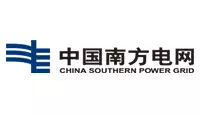
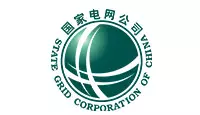
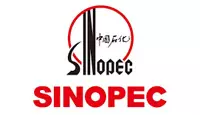
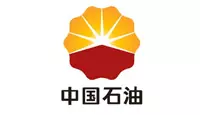

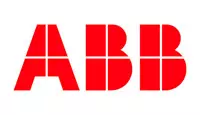

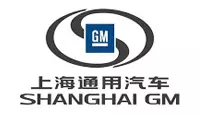
© 2023 Shanghai C&G. All Rights Reserved.